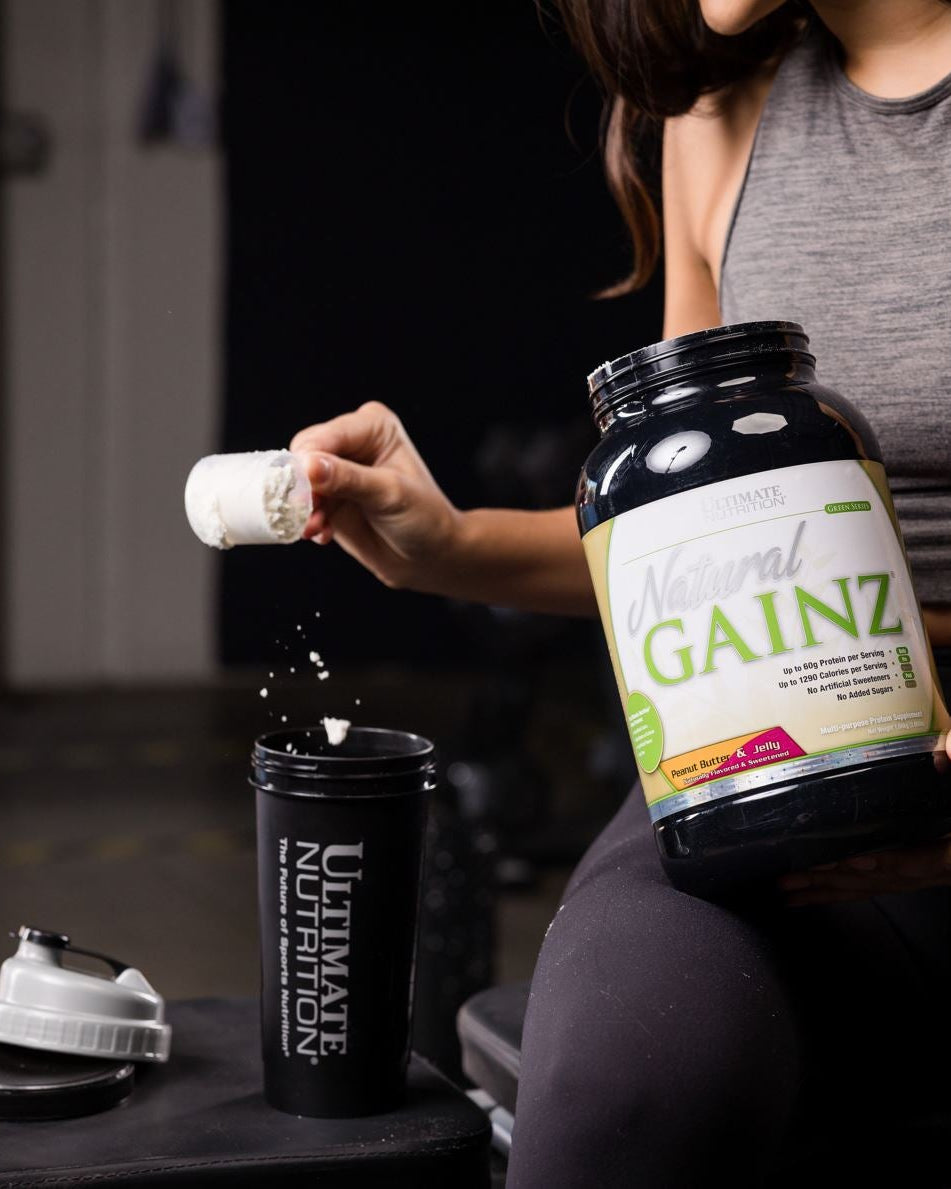You’re an athlete, a fitness enthusiast, and a health nut; you know the basics of eating well and fueling your body for growth and recovery. Now, you want to push even further and learn even more. We’ve got you covered.
Having a greater than average understanding of nutrition can do wonders for your health and bring you closer to whatever goal you’re looking to achieve. The intro course to nutrition will encourage you to eat your greens, avoid processed foods, and drink plenty of water, but when nutrition becomes a more serious part of your life, it can feel like you’re missing something.
What’s missing isn’t too complicated; it’s just a bit beyond the basics. You can move along in your journey by understanding the details of nutritional health: micronutrients and macronutrients (micros and macros).
You can take things up a notch and achieve your goals more accurately by learning about micro and macronutrients and how they influence your body. Macronutrients are those big overarching categories we often hear about; fats, protein, and carbohydrates. Micronutrients are the smaller vitamins and minerals that we usually don’t pay attention to until it’s time for a doctor's visit, like Vitamin C, calcium, and manganese.
Both macros and micros are essential for your health. If you want your body to function at its best, you’ll want to give it everything it needs, including a complete diet of micros and macros. Now, how much of each nutrient do we need to be considered healthy? Well, it depends.
How To Split Up Your Macros
When deciding how to split up your macros, you should consider two things: your body and your goals. Someone who wants to lose fat will eat differently from someone looking to gain muscle. In the same way, someone who is leptin resistant will eat differently from someone who is not.
The first step to finding the perfect macro split for you is honing in on your goals. Do you want to lose weight, build muscle, recover faster, digest better, or increase your endurance? We’re all different, with different goals, so there’s never going to be a one-size-fits-all macronutrient ratio.
Let’s figure out what would work best for you.

Let’s Uncover Your New Macro Split
Your first step is to choose what's more important to you: fat loss, lean muscle gains, or maintaining your current physique. Although losing fat and building muscle at the same time sounds ideal, you'll better be able to achieve your goals if you focus primarily on one at a time.
Many pro athletes utilize a "building" phase lasting several weeks or months to put on muscle, followed by a "cutting" phase to achieve a lean physique. You don’t have to stick to any particular macro split forever, you should adjust your diet throughout the year as your body, lifestyle, and goals change.

Macro Splits Based on Your Goals
Macros for Building Muscle
When it comes to building muscle, protein’s the macro to prioritize. You’ll first want to determine your minimum protein intake and go from there. It’s best to consume 0.7 to 1 gram of protein per pound of bodyweight when looking to add on some lean mass.
Although hitting your protein intake is crucial, so is enjoying the benefits of the other two macros. Carbohydrates give you the energy you need to perform well during your workouts, and healthy fats help regulate your hormones, metabolism, reproduction, and mood.
Diet Recommendations: The best macro ratio for muscle gain consists of 40-50 percent protein, 20-40 percent carbohydrates, and 20-30 percent fat.
Macros for Losing Fat
It may be counterintuitive, but you don’t have to cut out fats to begin losing body fat. In fact, some of the best macro ratios for cutting and leaning out favor fats. The hardest part about losing body fat is remaining in a calorie deficit. You’ll need to develop a meal plan filled with foods you enjoy that keep you feeling satiated.
Eating protein-dense meals will help you stay fuller for longer and help you maintain your muscle even as you lose weight. Carbohydrates are likely to spike insulin levels leading to increased hunger; this can be difficult to manage when trying to stick to a diet.
Diet Recommendations: For fat loss, you’ll want to stick to a high-protein (40-50 percent), high-fat (30-40 percent), and low-carb (10-30 percent) diet. This kind of diet model resembles the popularized “Keto” diet, which many overweight and obese people have found success in.
Macros for Increased Endurance
Improving your endurance is an excellent goal. Endurance is what helps you enjoy longer training sessions and push harder. Consistent training will surely help build up your endurance, but you can also benefit from a thoughtfully designed diet.
For enhanced endurance, your body will need more energy and proper recovery. Energy will help you perform, and adequate rest will let your body recover for the next challenge it’s up against. Most of your energy will come from carbohydrates, and protein is best for recovery.
Diet Recommendations: For increased endurance, you want to use a high-carb diet to your advantage. Try allocating most of your calories towards carbs (40-60 percent), the second most to protein (25-35 percent), and the rest to fats (15-25 percent).
Macros for Maintaining
You’ll want to enter a maintenance phase when you're happy with your physique. Maintenance is just what it sounds like; it’s when you want to stay at your current body fat percentage and keep the same amount of muscle.
A maintenance phase is when your diet will probably be the most “balanced” it’s ever been. You want to be able to sustain your current training and lifestyle. In this case, fats, proteins, and carbs will all be equally important.
Diet Recommendations: To maintain your physique, consider eating an equal portion of each macro (33-33-33). If you’re going to increase one macro, let it be either protein or carbs so that you can continue to build muscle and lose fat.

Macro Splits Based on Your Body Type
Once you understand how your macros can impact your main fitness objective, it's important to factor in the role of your body type. Your body type helps determine how well you tolerate carbs. Depending on your body type, you’ll most likely want to adjust your ratio of carbs to the other macros.
There are three general body types, ectomorph, mesomorph, and endomorph. These types are broad, so don’t be surprised if you fall somewhere in between as an "endo/meso" or "ecto/meso."
Even if you determine you're somewhere in the middle, these categories help give you an idea of what kind of macronutrient ratios would work best for you. You can always start with the body type you most resemble and tweak your split as necessary.
Ectomorph
Typically, ectomorphs have a delicate bone structure, a small frame, and fast metabolism. Overall, ectomorphs are slim and often get categorized within the fitness community as "hard gainers."
On the one hand, those with ectomorphic bodies find it hard to gain weight and put on mass. Yet, it's easy for them to become and stay lean. Ectomorphs tend to require a more significant percentage of carbohydrates to prevent muscle catabolism and a higher calorie intake overall.
Diet Recommendations: Ectomorphs should stick to the high end of the carbohydrate range, between 30-60 percent of total calories. Higher carbohydrate ratios will benefit lean mass gains, while lower carbohydrate ratios will accelerate fat loss. Carbs aside, at least 25 percent of your total calories should come from protein, with the remainder from fat.
Mesomorph
A mesomorph is someone who trends toward being muscular. They're often strong, athletic hard-body types with well-defined muscles, wider frames, and dense bone structure. Mesomorphs generally have little trouble gaining muscle or losing fat, though they will put on fat more readily than ectomorphs.
They can handle a moderate level of carbs due to their ample capacity to store muscle glycogen. Though, weight gain will surely happen if carbs and calories are overly high.
Diet Recommendations: Mesomorphs do well in a carbohydrate range between 20-50 percent of their total daily calories. To stimulate fat loss in mesomorphs, protein and fat ratios should increase while carbohydrate intake should decrease. To stimulate muscle growth, your macros should balance out more evenly. In both cases, no more than 40 percent of your diet should come from fat.
Endomorph
Endomorphs typically have a round or pear-shaped body, shorter limbs, a stocky build, and a slower metabolism.
Endomorphs can put on a lot of muscle, but they also tend to carry more adipose tissue and thus have a greater propensity to store fat. Because excess carbohydrates in the endomorph's diet end up as fat, a high carbohydrate intake will make it difficult for them to get lean or lose weight.
Diet Recommendations: Endomorphs should stick to the low end of the carbohydrate range (10-40), with variation depending on their goals. When trying to gain mass, 30-40 percent of their diet should consist of carbohydrates, the middle range (20-30) when looking to maintain, and the low-end for fat loss (10-20). The keto macro ratio is well-tailored to endomorphs seeking weight loss.
As with the other body types, protein and fat make up the remainder of your calories, with 25-50 percent of total calories coming from protein and 15-40 percent from fat.
When splitting up your macros based on your body type, the first thing you should determine is the proportion of carbs that will work best for you. Once you know what your carb intake will be, you can easily portion out your protein and fat.

It’s All About You
Once again, there’s no one-size-fits-all to macros. Everyone’s body type and goals are different.
We’re humans, athletes, in particular; we change significantly over time. Every time you change your lifestyle, goals, or body, you’ll want to reevaluate your split and see if there’s room for improvement.
Additionally, the advice we’ve offered you today is just advice. You’ll have to keep a vigilant eye on how your split impacts your appearance, performance, and mood. Keep mixing up your split until you find what works best for you, but know that you’ll soon have to switch things up again.
Your health is something you have your whole life to improve and perfect; Ultimate Nutrition has your back every step of the way.





















